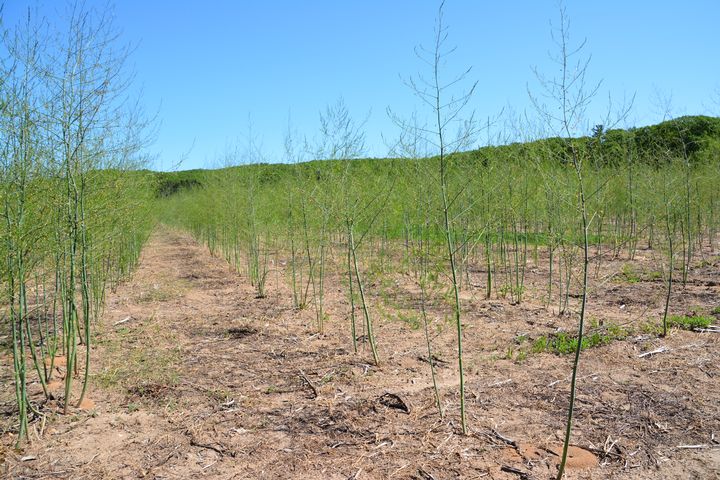Jun 25, 2020Weed control after final harvest in asparagus essential
Asparagus harvest is reaching completion in Michigan. Most growers harvest fields 20-25 times during a typical season. After a hard frost and hot weather, the season appears to be about average for yields.
It may have been difficult to apply post-emergence herbicides during the harvest because of rapid growth and limited opportunity to spray. With warm temperatures continuing, there will be a very short window between final harvest and fern growth for application of post-emergence herbicides to control perennial and annual weeds. A residual herbicide for weed control through the summer also should be applied at this time.
Asparagus growers have several choices of herbicides for control of emerged weeds. The synthetic auxin herbicides 2,4-D (Formula 40, Embed Extra) and dicamba (Clarity) are effective against many broadleaf annuals and perennials. They also can injure asparagus plants if there is too much contact with spears or fern. They should be applied within one day of the final harvest in a field. Clopyralid (Spur) and quinclorac (Quinstar) also are synthetic auxins and may be applied after harvest. Clopyralid is effective against the weeds in the Asteraceae, Fabaceae, Solanaceae, Polygonaceae and Plantaginaceae families. Quinclorac is effective against field and hedge bindweed, Canada thistle, sowthistle, Russian thistle, ragweeds and several annual grasses (large crabgrass, barnyardgrass and foxtail).
Glyphosate (Roundup) may be applied immediately after a complete harvest. A combination of glyphosate plus one of the synthetic auxins often improves control of difficult perennials. Check the labels of the various herbicides for instructions on tank mixes.
If applying post-emergence herbicides other than glyphosate, it normally is efficient to include a graminicide (Fusilade, Poast, SelectMax) in the mix. Fusilade is the most effective against quackgrass and other perennial grasses.
Residual herbicides (Karmex, Tricor, Chateau, Dual Magnum, or Callisto) also should be applied immediately after final harvest for the year. Callisto may cause some fern bleaching; therefore, use once in two years to avoid crop bleaching. The combination of residual and post-emergence herbicides will kill emerged weeds and suppress new germination of most annual weeds during summer. Using two herbicides with different modes of action has been the most effective method for long-term and complete control of most weeds. The post-harvest herbicides generally should be different from those applied pre-emergence in the same year.
If some asparagus has already gone to fern in some fields and there is serious weed presence, it may be effective to mow the field at 6-8 inches above the soil to leave sufficient weed biomass to receive the post-emergence herbicides and also remove most of the asparagus fern to avoid crop injury. The stalks left in the field normally do not take in sufficient herbicide to cause permanent crop injury.
Herbicide recommendations can be found in Michigan State University Extension bulletin E433, Weed Control Guide for Vegetable Crops. Herbicide labels can be found online at CDMS.
– Sushila Chaudhari and Bernard Zandstra, Michigan State University















